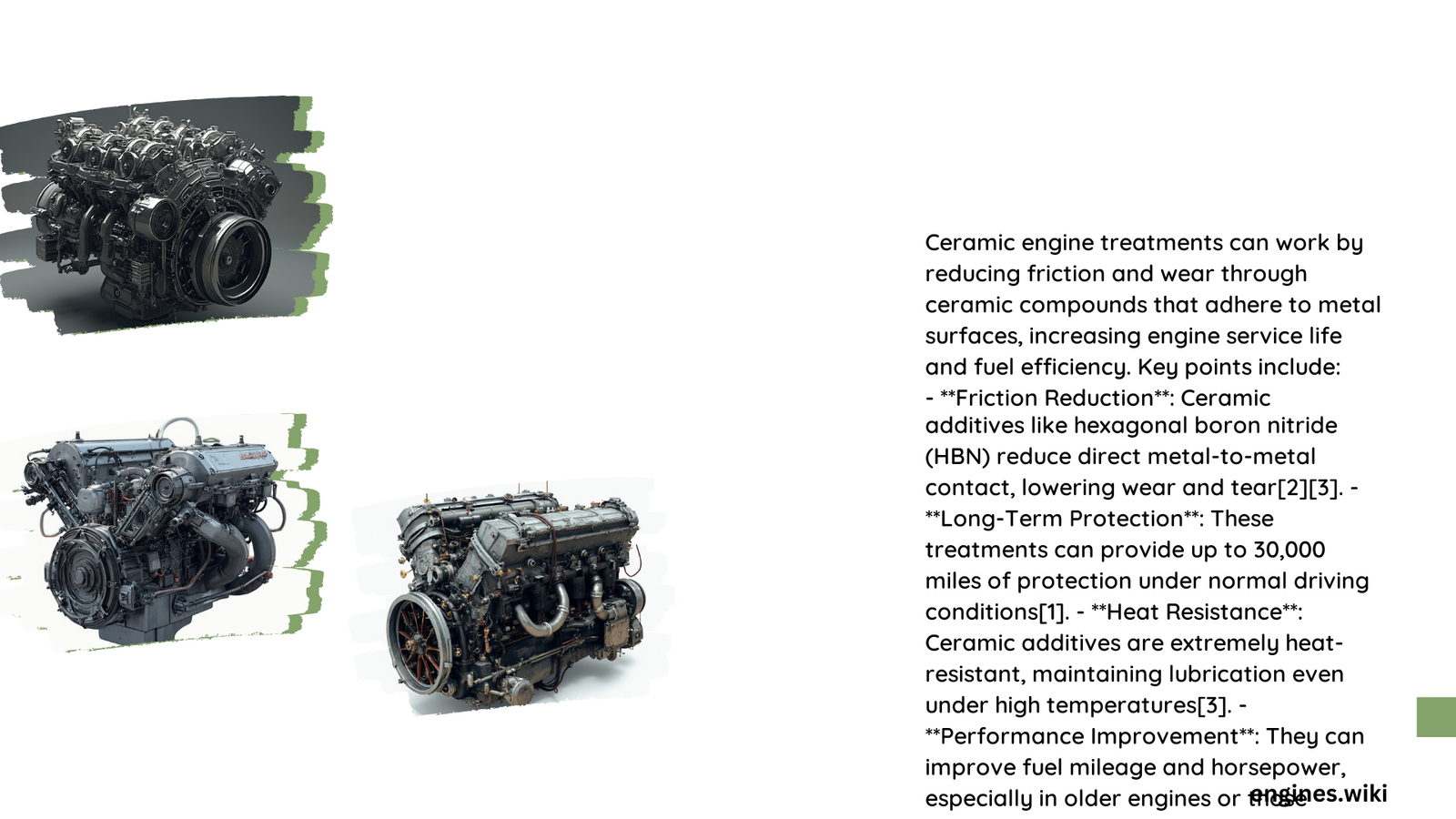Ceramic engine treatments have emerged as a promising solution for automotive enthusiasts seeking enhanced engine performance and longevity. These innovative nano-particle technologies claim to reduce friction, minimize wear, and improve fuel economy by creating microscopic protective layers within engine components. But the critical question remains: do ceramic engine treatments actually deliver on their bold performance promises?
What Are Ceramic Engine Treatments?
Ceramic engine treatments are specialized lubricant additives containing nano-ceramic particles designed to:
- Fill microscopic surface imperfections
- Reduce metal-to-metal friction
- Protect critical engine components
- Potentially improve overall engine performance
How Do Ceramic Engine Treatments Function?

Mechanism of Nano-Ceramic Protection
Ceramic treatments work through a unique molecular interaction process:
- Particle Infiltration
- Nano-ceramic particles penetrate microscopic engine surface gaps
- Particles create a smooth, protective ceramic coating
-
Reduces friction between moving metal components
-
Friction Coefficient Reduction
- Lowers direct metal contact
- Minimizes wear and tear
- Potentially extends engine lifespan
Scientific Evidence of Performance
Fuel Efficiency Improvements
| Treatment | Fuel Economy Gain | Test Conditions |
|---|---|---|
| Ceramic Engine Protector | 7% (cold conditions) | Comparative oil tests |
| TriboTEX | Up to 6% | Vehicles over 130,000 miles |
| CerMet | 2.26% | Class 8 Truck Test |
Wear Reduction Metrics
Key performance indicators demonstrate significant potential:
- TriboTEX
- Fills gaps as small as 40 microns
- Increases in-cylinder compression
-
Reduces internal engine wear
-
Cera Tec
- Prevents direct metal-to-metal contact
- Lowers friction coefficient
- Extends engine service life
Practical Considerations for Users
Application Guidelines
- Follow manufacturer’s specific instructions
- Add treatment every 40,000 miles
- Compatible with most standard engine oils
- Avoid mixing with incompatible lubricant additives
Potential Limitations
While promising, ceramic engine treatments are not universal solutions:
- Results vary across different vehicle types
- Performance depends on existing engine condition
- Not a substitute for regular maintenance
- Limited long-term scientific validation
Expert Recommendations
- Consult professional mechanics
- Choose reputable ceramic treatment brands
- Maintain regular oil change schedules
- Monitor vehicle performance post-treatment
Conclusion
Ceramic engine treatments show measurable potential in improving engine performance, with scientific evidence supporting modest gains in fuel efficiency and wear reduction. However, users should maintain realistic expectations and view these treatments as complementary to standard maintenance practices.
References:
- Ardina Car Care Performance Data
- NASA Spinoff Nanotechnology Report
- SAE Technical Paper on Ceramic Treatments
Disclaimer: Individual results may vary. Always consult automotive professionals before implementing any engine treatment.
